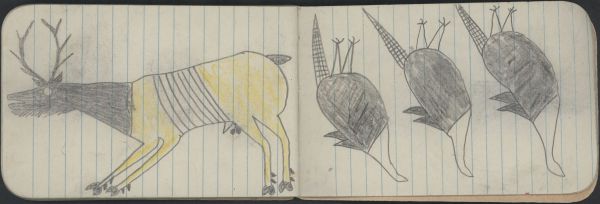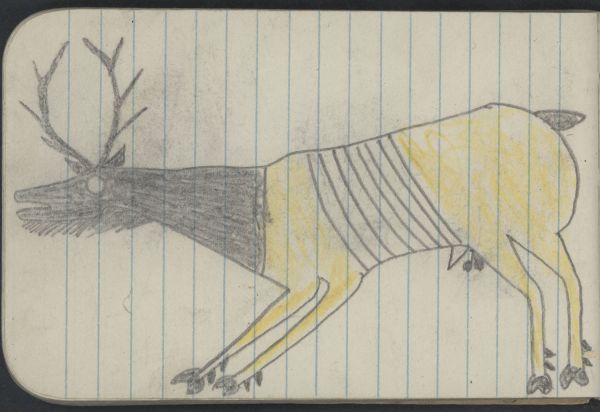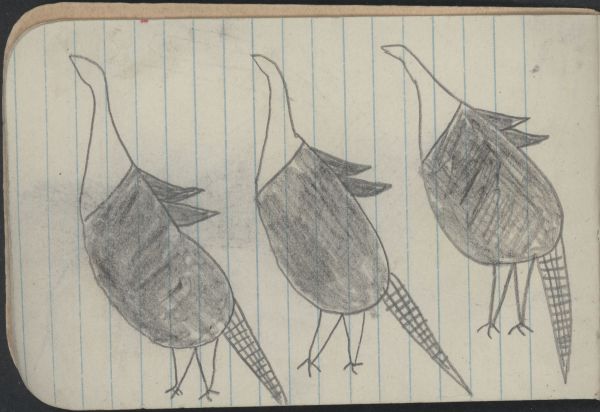ANIMAL, ELK; BIRDS, 3 TURKEYS
Ethnographic Notes
72 A bull elk runs from right to left across the page (extended legs show motion). He has dark shoulders and yellow body. He has a rack of antlers (four by four points), and his round eye is created by an outlined circle of unpigmented paper, contrasting with the dark hide around it. Penciled details include antlers, ears, beard, split hooves, dewclaws, genitalia, midsection (ribs ?), and tail. Composition of the drawing resembles the same right-to-left, full-page orientation of human warrior portraits. Twelve nearly identical images of this male elk appear in this ledger (plates 19-23; 30, 32, 37-41). See further discussion for plate 19. 73 The images of three turkeys fill the page. They have no detailing of eyes or beaks; bodies are darkly shaded and tails are covered in a checkered pattern. Karen Petersen shows a similar bird (Plains Indian art from Fort Marion, Norman: University of Oklahoma Press, 1983: 279), with three toes as distinctive, and also a white-banded tail, barely visible here. Making Medicine, one of the Cheyennes held at Ft. Marion, made a drawing of seventeen birds from the southern plains (Berlo 1996: 136). The turkeys here are consistent with his drawing. John H. Moore describes Cheyenne bird taxonomy (1986: 184), and he places wild turkeys among the �xamaevekseo� (ordinary) birds, and then the grouping of �hoevekseo� (ground birds), along with prairie chickens. Moore adds, �Most members of this genus are considered to be edible, and turkeys and prairie chickens are hunted by the Cheyennes at the present time, turkeys in Oklahoma and prairie chickens in Montana� (1986: 186). See more turkey images: plates 39, 41. Turkeys also appear in the other related Northern Cheyenne 1879 Dodge City ledgers.


